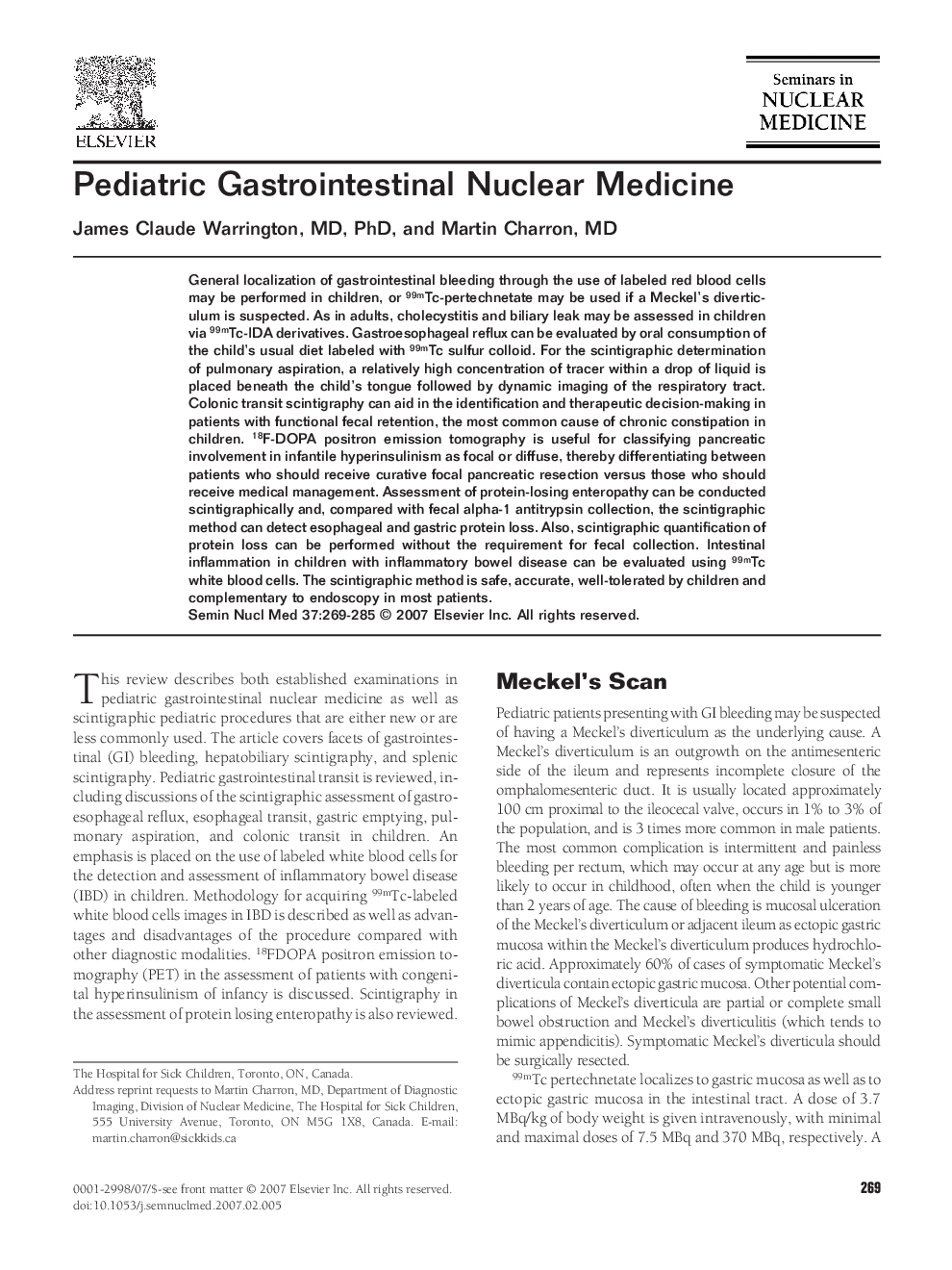| Article ID | Journal | Published Year | Pages | File Type |
|---|---|---|---|---|
| 4251254 | Seminars in Nuclear Medicine | 2007 | 17 Pages |
General localization of gastrointestinal bleeding through the use of labeled red blood cells may be performed in children, or 99mTc-pertechnetate may be used if a Meckel’s diverticulum is suspected. As in adults, cholecystitis and biliary leak may be assessed in children via 99mTc-IDA derivatives. Gastroesophageal reflux can be evaluated by oral consumption of the child’s usual diet labeled with 99mTc sulfur colloid. For the scintigraphic determination of pulmonary aspiration, a relatively high concentration of tracer within a drop of liquid is placed beneath the child’s tongue followed by dynamic imaging of the respiratory tract. Colonic transit scintigraphy can aid in the identification and therapeutic decision-making in patients with functional fecal retention, the most common cause of chronic constipation in children. 18F-DOPA positron emission tomography is useful for classifying pancreatic involvement in infantile hyperinsulinism as focal or diffuse, thereby differentiating between patients who should receive curative focal pancreatic resection versus those who should receive medical management. Assessment of protein-losing enteropathy can be conducted scintigraphically and, compared with fecal alpha-1 antitrypsin collection, the scintigraphic method can detect esophageal and gastric protein loss. Also, scintigraphic quantification of protein loss can be performed without the requirement for fecal collection. Intestinal inflammation in children with inflammatory bowel disease can be evaluated using 99mTc white blood cells. The scintigraphic method is safe, accurate, well-tolerated by children and complementary to endoscopy in most patients.
